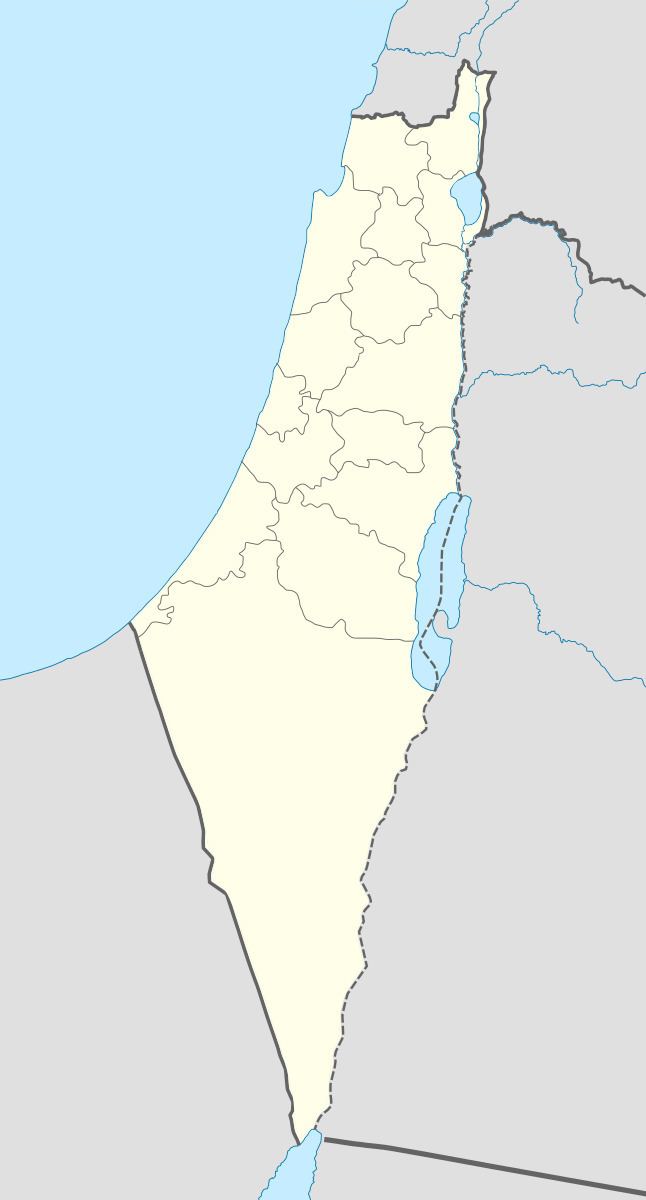Arabic كُدنة Also spelled Kidna Palestine grid 140/117 Local time Saturday 8:29 PM Date of depopulation 23 October 1948 | Name meaning Kudna (personal name) | |
 | ||
Weather 16°C, Wind N at 18 km/h, 74% Humidity | ||
Hiran kudna
Kudna (Arabic: كُدنة, also known to the Crusaders as Kidna) was a Palestinian Arab village, located 25 kilometers northwest of Hebron.
Contents
Hiran kudna
History
Kudna was known to the Crusaders as Kidna. An archaeological site in Kudna contained remnants of a fort, the foundations of buildings, previously inhabited caves, and cisterns. About half a dozen khirbas lay in the vicinity. The remains of a fortified building, possibly a hall-house, from the Crusader era is still standing.
Ottoman period
During the rule of the Ottoman empire, Edward Robinson passed by in 1838, and noted that Kudna was a small village, with the remains of a large ancient building. The western wall was still standing, some 150 ft long (46 m), built of large stones. In 1863 the French explorer Victor Guérin found Kudna to have five hundred inhabitants. It was located on a hill whose summit was rocky and whose sides were covered with olive and fig trees interspersed with tobacco. On the highest point of the hill were the remains of an old castle, along sixty paces on fifty seven wide. Guérin found the lower courses being ancient, possibly Byzantine; the upper layers more recent.
An Ottoman village list of about 1870 indicated 12 houses and a population of 40, though the population count included men only. In 1883, the Palestine Exploration Fund's Survey of Western Palestine described Kudna as a small village situated on a low hill and surrounded by olive trees. The walls of a Crusader Castle rose from the middle of the village.
British Mandate era
In the 1922 census of Palestine conducted by the British Mandate authorities, Kudna had an entirely Muslim population of 281, increasing in the 1931 census to 353 inhabitants.
In 1945 the population of Kudna was 450, all Arabs, who owned 15,744 dunams of land according to an official land and population survey. 825 dunams were plantations and irrigable land, 6,505 for cereals, while 15 dunams were built-up (urban) land.
1948, and aftermath
During the 1948 Arab-Israeli War, the Israeli forces of the Giv'ati Brigade, commanded by Yigal Allon in Operation Yo'av assaulted the village on 22 October 1948. Though the village was defended by volunteers from the Arab Liberation Army, the Egyptian Muslim Brotherhood, and local militia men, it was overtaken by the Israeli forces and the village inhabitants fled. Benny Morris reports that Kudna was one of a number of villages, including Zikrin, Ra'na, Deir ad Dabbun and Ajjur, where most of the people fled before the arrival of the Givati Brigade; however those that did remain were expelled eastwards.
The area today is inhabited by the Israeli kibbutz Beit Nir, established to the west of the village site, on village land.
The Palestinian historian Walid Khalidi described the village remaining structures in 1992: "The houses have been reduced to levelled debris hidden beneath an overgrowth of wild vegetation. One can see the stones that served as fences for home gardens. Cactuses and carob, fig, and olive trees grow on the site."
